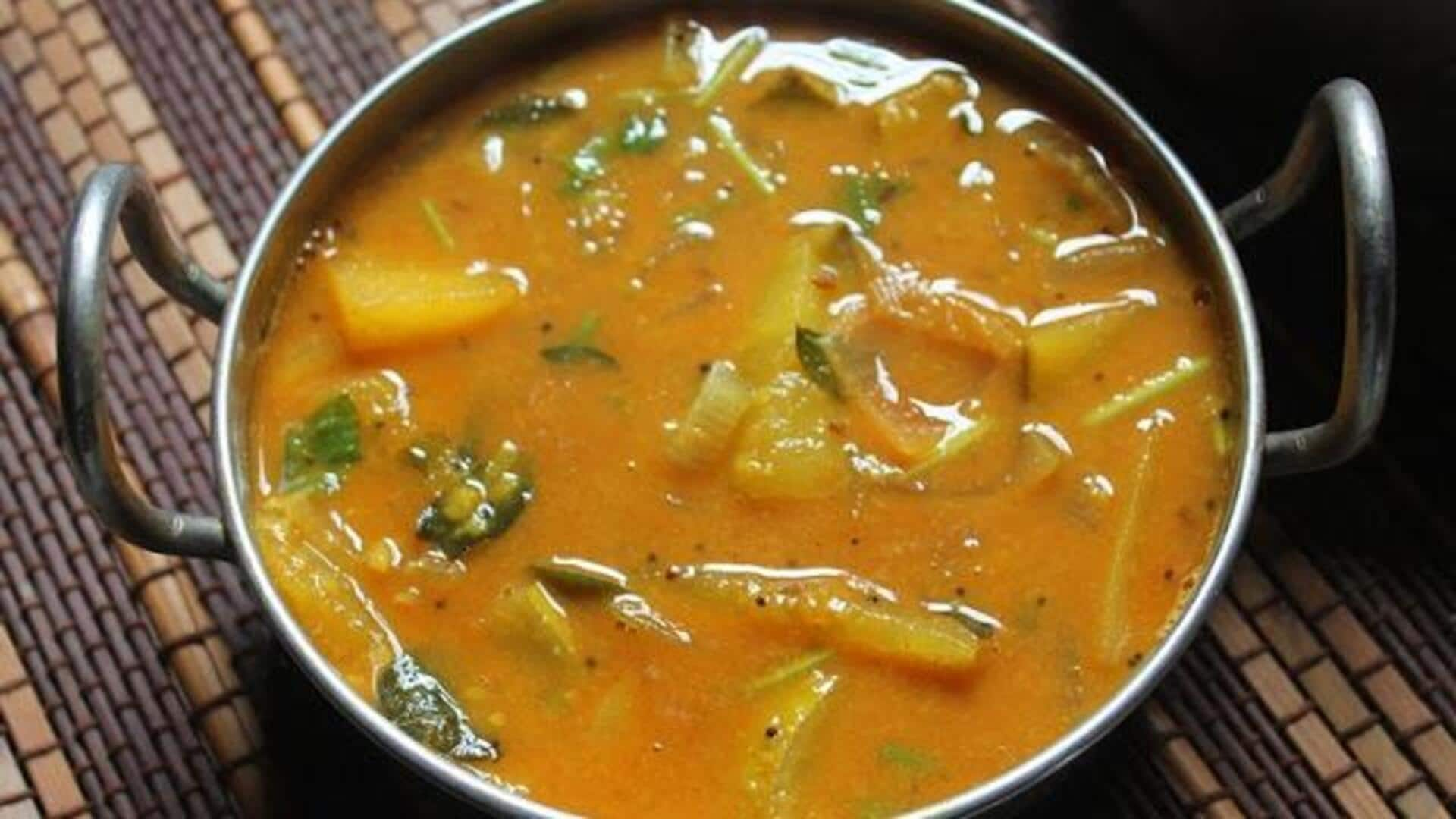
Tracing sambar's flavorful journey
What's the story
Sambar, a staple of South Indian cuisine, comes with a rich history and diverse regional adaptations. Hailing from Tamil Nadu, this lentil-based stew is famous for its tangy flavor and aromatic spices. Over the years, sambar has evolved in different parts of India, each giving its unique touch to the dish. Here's how sambar has evolved in various Indian cuisines, with its distinct ingredients and preparation.
Classic roots
Tamil Nadu's traditional sambar
In Tamil Nadu, sambar is traditionally prepared with toor dal (pigeon peas), tamarind pulp, and a mix of spices including mustard seeds and curry leaves. Vegetables such as drumsticks and carrots are also widely used. The use of freshly ground spice mixes gives it an authentic taste that still appeals to the locals.
Coconut influence
Kerala's coconut twist
In Kerala, the traditional recipe of sambar gets a unique twist with the addition of coconut. Either grated coconut or coconut milk is mixed into the stew, which elevates its flavor profile by several notches. Not only does it add to the texture, but it also gives a slightly sweet undertone. The sweetness beautifully balances the spicy notes of the dish, making Kerala's sambar richer and complex in flavor.
Distinct flavor
Karnataka's unique Huli
In Karnataka, the local iteration of sambar, huli, is famously sweet (thanks to some jaggery) and uses local vegetables such as ash gourd to make the dish even more complex. The sweet and spicy notes make it different from other regional varieties of sambar, making for a unique taste.
Heat factor
Andhra Pradesh's spicy version
Andhra Pradesh's version of sambar is a testament to the state's love for spicy food. The dish includes some extra chilies, making it much spicier. Tamarind, a key ingredient, is used with a sharper sourness that balances the spiciness and goes excellently with the rice dishes common in this part of the country, creating a beautiful blend of flavors.
Diverse additions
Maharashtra's varied ingredients
Maharashtra offers yet another variation, where you throw in ingredients such as peanuts or cashews for extra texture. This version can also include seasonal vegetables (not generally found in other sambars) such as pumpkin or radish, which lend additional flavors making it versatile enough for different palates across India's western state.